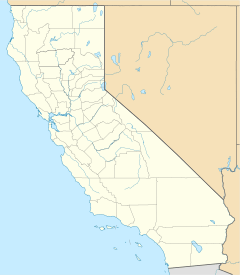Khoonkhwuttunne, California facts for kids
Quick facts for kids
Khoonkhwuttunne
|
|
|---|---|
|
Former settlement
|
|
| Country | United States |
| State | California |
| County | Del Norte County |
| Elevation | 33 ft (10 m) |
Khoonkhwuttunne (also called Qo-on-qwut-tunne) was once a village belonging to the Tolowa people. It was located in Del Norte County, California. This settlement sat right at the mouth of the Smith River. Its elevation was about 33 feet (10 meters) above sea level.
Contents
What Was Khoonkhwuttunne?
Khoonkhwuttunne was a "former settlement." This means it was once a place where people lived and built homes. Over time, for different reasons, people stopped living there. It is no longer an active village today.
The Tolowa People
The Tolowa are a group of Native Americans who have lived for a very long time in what is now northern California. Their traditional lands stretched along the Pacific coast. They lived near rivers and the ocean.
Life by the Smith River
The location of Khoonkhwuttunne was very important. Being at the mouth of the Smith River meant the Tolowa people had access to many resources. Rivers provided fresh water and fish. The nearby ocean offered seafood like clams and mussels. Forests provided wood for shelter and tools.
Why River Mouths Were Important
Living at a river mouth was a smart choice for early settlements. It offered easy travel by canoe. It also provided a mix of river and ocean resources. This helped the Tolowa people get all the food and materials they needed to survive.
Why Settlements Become Former
Villages like Khoonkhwuttunne can become "former" for many reasons. Sometimes, people move to new places. This might be for better resources or safer locations. Other times, big events like floods or changes in the environment can make a place unlivable.
The History of Tolowa Villages
Many Tolowa villages existed along the coast and rivers. Each village had its own name and community. These villages were important centers for their culture and daily life. They were places where families lived, stories were told, and traditions were passed down.


